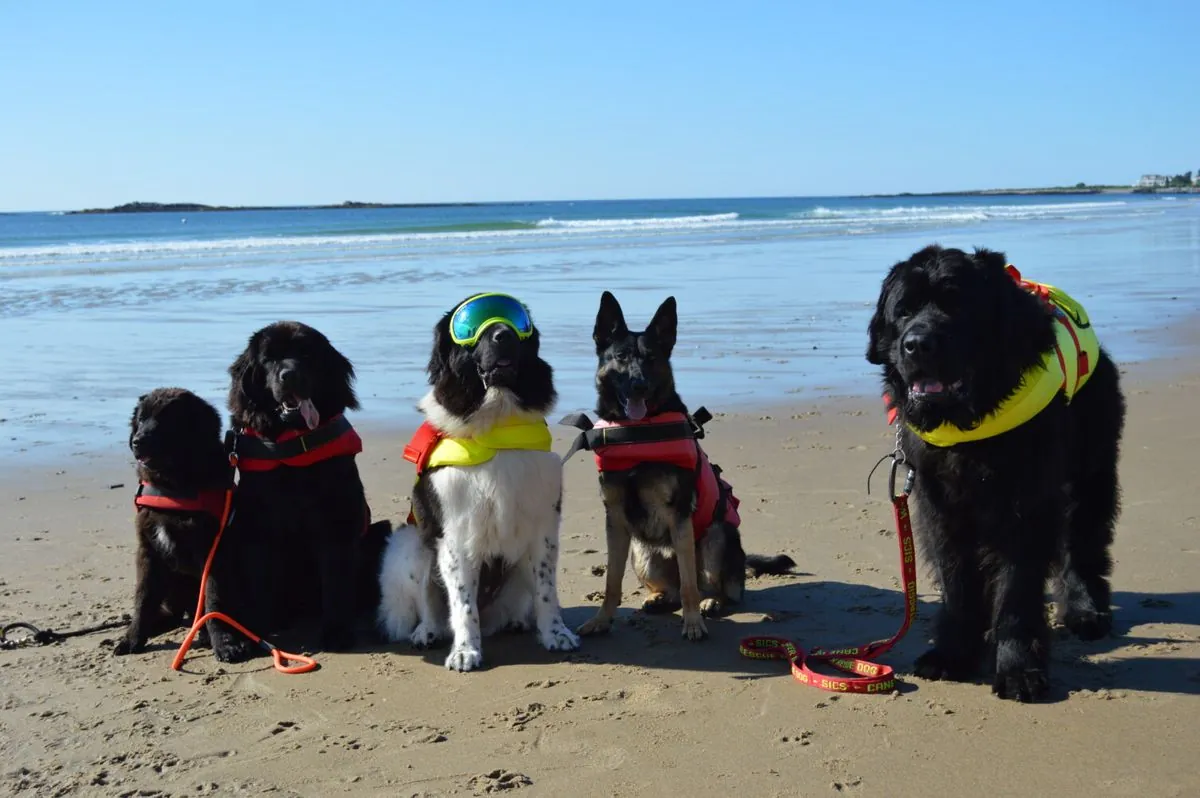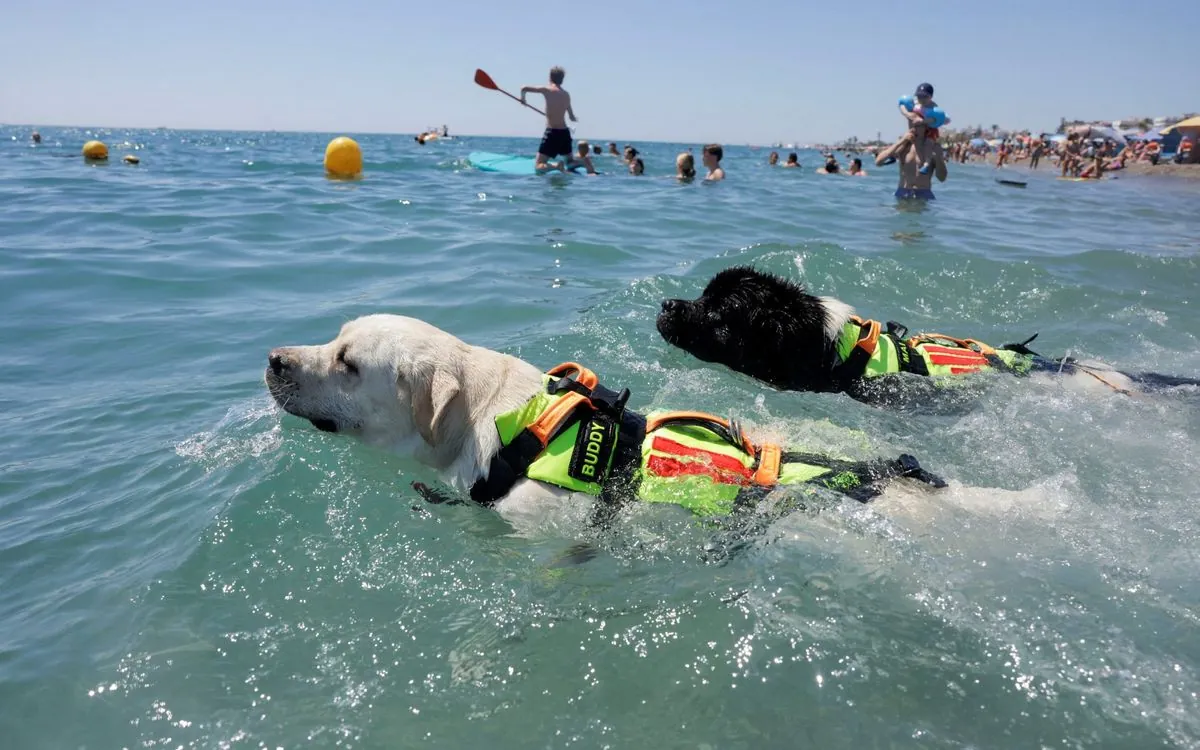Canine Lifeguards: Spain's Beaches Embrace Four-Legged Rescuers
Spanish beaches introduce trained dog lifeguards to assist in water rescues. Labradors and Newfoundlands, known for their swimming prowess, join human lifeguards in patrolling popular bathing spots.

In a novel approach to beach safety, Spanish coastal authorities have introduced canine lifeguards to patrol popular swimming areas. This initiative, launched in the summer of 2024 in the Malaga-Velez region of southern Spain, utilizes the exceptional swimming abilities of Labradors and Newfoundlands to assist in water rescues.
These canine lifeguards, easily identifiable by their yellow vests, are the result of a rigorous training program that begins when the dogs are just 3-4 months old. Over the course of a year, they are trained to respond to commands from human lifeguards and perform rescue operations both from the shore and at sea.
Manuel Duran, manager of the MresQ canine rescue unit, explains the training process: "In just one year, the dogs are perfectly trained." The canines learn to leap into the water and pull people to safety using a cord attached to a harness.

The use of dogs in water rescue is not a new concept. In fact, Newfoundlands have been employed in this capacity for over two centuries. The breed's natural swimming abilities, coupled with their immense strength, make them ideal for water rescue operations. A typical Newfoundland can weigh up to 150 pounds (68 kg) and possesses a water-resistant double coat, perfectly suited for aquatic environments.
"I just wanted a dog as a pet and had not really thought about working with him in my job as a lifeguard, but after I had him two weeks I took him with me to the sea and realised what a fantastic swimmer he was."
The idea of using dogs as marine rescue animals in Spain originated about a decade ago when David Alvarez, a lifeguard in San Pedro del Pinatar, Murcia, began training his Newfoundland, Bruno, for water rescues.
Both Labradors and Newfoundlands possess webbed paws, enhancing their swimming capabilities. Labradors, originally bred for retrieving fish, are known for their intelligence and trainability, making them excellent candidates for this specialized role.
The canine lifeguards' daily routine is carefully managed to ensure their well-being. They patrol between 2 PM and 5 PM to avoid the most intense heat of the day. Duran emphasizes the importance of the dogs' comfort: "The dogs live with their handlers and are provided with shade, air conditioning, fans, and everything else necessary to keep them hydrated and comfortable."
This initiative in Spain is part of a growing trend worldwide. In Italy, for example, about 300 dogs patrol 30 beaches, saving approximately 20 lives each year. The use of dogs in water rescue is now recognized by many maritime authorities globally, with some canine units even trained to jump from helicopters into the water.
As these four-legged lifeguards take to the Spanish shores, they bring with them a unique set of skills that complement their human counterparts, potentially revolutionizing beach safety in the region.


































